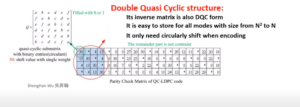For decades, mobile human communications have been taking place within a few metres of the ground. As wireless technology evolves, however, we will increasingly reach into the clouds.
One of the most recent changes is the adoption of Open RAN standards. Open RAN is an attempt to make the most of solutions enabled by the virtualization of RAN and disaggregate the network, making it possible to manage components more efficiently.
Because Open RAN offers market-driven standards for designing and manufacturing equipment or developing virtual solutions, the wide use of Open RAN also promises to create a richer marketplace with multiple vendors – and the possibility to hire different products from diverse companies seamlessly.
“The prospects of Open RAN are really bright,” Balaji Raghothaman, Chief Technologist at Keysight, said during a webinar last year. “There is tremendous momentum [for Open RAN]. What started as just the frontal effort now encompasses all aspects of the network.”
The use of Artificial Intelligence and Machine Learning is essential to manage those complex systems, especially what Raghothaman calls the “middle RAN.” On the other hand, cloud computing and edge cloud use cases can drive the opening of interfaces in the “upper RAN.”
According to the expert, understanding how this new environment functions will highly benefit future generations of telecoms. “All of this will take the entire 5G cycle to really understand and implement in a mature way, and this will help us set the stage and provide the template going forward into 6G.”
Balaji Raghothaman is one of the speakers in the upcoming 6GSymposium Fall 2022. He will join Paul Challoner (Ericsson), Ravi Pragada (InterDigital), Greg Ewert (HAPS Alliance), and Sidd Chenumolu (Dish) to discuss the future of RAN architecture.
Learn more about the 6GSymposium and register here.
Into Space
While open networks are taking the RAN to the cloud, another interesting possibility is going into space. Non-Terrestrial Networks (NTN) have been gaining traction in recent years, and several experts believe this new approach will help put 6G everywhere.
This is especially true when satellites enter the game. According to data gathered by 6GWorld from the United Nations Office for Outer Space Affairs, as of last March, there were 7,220 satellites orbiting Earth, 6,376 of which are registered with the UN. The majority of those launches were for Low Earth Orbit [LEO] spacecraft.
“LEO Satellite Access Network is expected to become a promising complementary technique to terrestrial cellular networks for future 6G wireless networks, due to its significant enhancement of capacity and signal coverage,” researchers from Beihang University, the National University of Singapore, University of Houston, and the University of Delaware concluded in a recent study.
While rapid strides have been made in delivering internet through Non-Terrestrial Networks, the researchers highlighted some technical challenges to address if NTN is to become a key factor in 6G.
Among the issues identified are random access, beam management, and Doppler resilient transmission technologies. “These issues are mainly caused by the high mobility of LEO satellites and the long distance of satellite-ground links,” they concluded.







